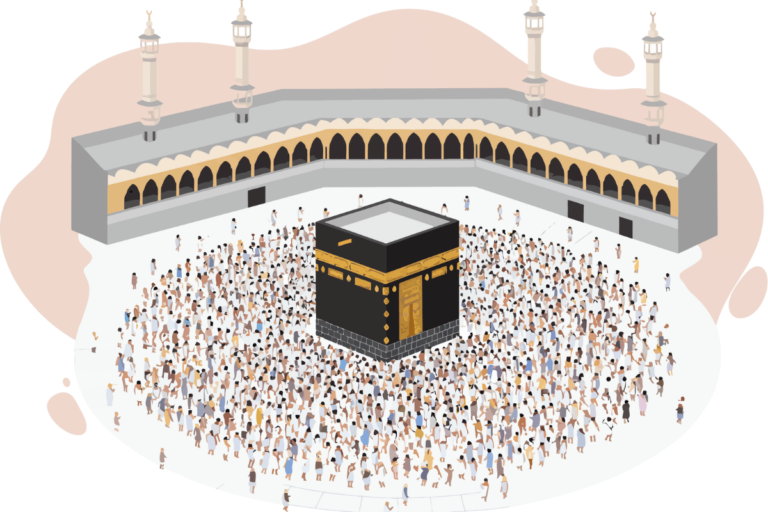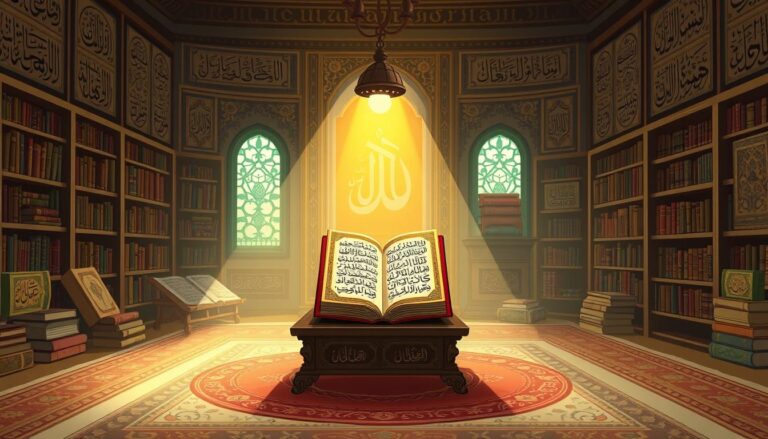Signs of the End Times in Islamic Eschatology
Islamic eschatology paints a vivid picture of the world’s final days. But how close are we to these prophesied events? This question has intrigued scholars and believers for centuries, sparking intense debates and careful study of religious texts.
The Quran and Sunnah serve as the primary sources for Islamic end times prophecies. These sacred texts outline a series of signs and events that will herald the Day of Judgment. From moral decay to cosmic upheavals, the signs span a wide range of phenomena.
Interestingly, some Muslims believe we’re already witnessing many of these signs. They point to current events and societal trends as evidence that the end times are upon us. But is this interpretation accurate, or are we simply seeing history repeat itself?
To truly understand the signs of the end times in Islamic eschatology, we need to delve deeper into the prophecies and their interpretations. Let’s explore the fascinating world of Islamic apocalyptic narratives and what they mean for our present and future.
Key Takeaways
- Islamic eschatology is rooted in the Quran and Sunnah
- End times signs include moral decay, wars, and supernatural events
- Key figures in Islamic apocalyptic narratives include the Mahdi and Jesus
- Some signs are believed to have already occurred
- Debates exist among scholars about the interpretation of these signs
Understanding Islamic Eschatology
Islamic eschatology is a key part of Muslim belief. It shapes how Muslims see the world and live their lives. It comes from Islamic apocalyptic literature, the Quran, and Hadith.
Definition and Importance
Islamic eschatology is about the end times in Islam. It talks about the signs of the Hour, important figures, and Judgment Day. It’s very important for Muslims, affecting their daily lives and beliefs.
Key Concepts and Beliefs
Important ideas in Islamic eschatology include moral decay and natural disasters. The Mahdi, Dajjal, and Jesus’ return are also key. The Quran explains stages like Barzakh, Resurrection, Judgment, and eternal life in Paradise or Hell.
Sources of Knowledge
The Quran and Hadith prophecies are the base of Islamic eschatology. Scholars like Ibn Kathir and Al-Ghazali have made big contributions. The Sahih al-Bukhari and Sahih Muslim have many stories about the end times and Judgment Day.
“The Last Hour will not come until the Quran returns to where it came from.” – Hadith from Sunan Ibn Majah
This vast collection of Islamic apocalyptic literature guides and inspires Muslims everywhere. It shapes their view of life’s purpose and what comes after.
The Dunyā and Ākhirah Divide
Islamic cosmology offers a unique view on Dunyā (the world we live in) and Ākhirah (the afterlife). This idea is key to Islamic belief. It shapes how Muslims see life and death.
Temporal vs. Spatial Understanding
In Islamic thought, Dunyā and Ākhirah aren’t just about time. They exist in different spaces. The Quran talks about Ākhirah many times, showing its big role in Muslim faith.
Interaction Between Worldly and Otherworldly Realms
Islamic scholars talk about Barzakh, a place between Dunyā and Ākhirah. This idea shows how these realms are connected. The Quran says Dunyā is needed to follow God’s will, showing how life and the afterlife work together.
Debates on Paradise and Hell
There’s debate on whether paradise and hell exist before Judgment Day. Some think they do, while others believe they’ll start after judgment. Muslims believe in different levels of heaven and hell. Where you end up depends on your actions in Dunyā.
“People are of three types on the Day of Resurrection: pious believers, infidels, and disobedient Muslims.”
This division shows how important your actions in Dunyā are for your fate in Ākhirah. It highlights the connection between these realms in Islamic cosmology.
Signs of the End Times in Islamic Eschatology
Islamic prophecies talk about many Signs of the Hour that signal the end times. These signs include moral decay and cosmic events. They help believers know when the Day of Judgment is coming.
The Quran and Hadith are key sources for Islamic eschatology. The Quran has some end-time prophecies, but the Hadith has more. Al-Bukhari, a famous Islamic scholar, confirmed 7,000 sayings in the Hadith as true. This makes the Hadith a vital part of Islamic prophetic knowledge.
Islamic traditions divide the Signs of the Hour into minor and major signs. Minor signs include:
- Increased ignorance about faith fundamentals
- Rise of false prophets
- Widespread apostasy
- Political corruption
- Imbalance in gender ratio, with fifty women for every man
Major signs of the Islamic end times events are dramatic:
- Appearance of the Antichrist (Dajjal)
- Return of Jesus (Isa) to defeat the Dajjal
- Invasion by Gog and Magog
- Cosmic events and natural disasters
These Signs of the Hour help believers understand and get ready for the events leading to the Day of Judgment in Islamic belief.
Minor Signs: Past and Present
Islamic eschatology talks about many minor signs of Judgment Day. These signs include historical events, today’s happenings, and changes in morals. Scholars say there are up to 48 minor signs, happening in the past, now, or in the future.
Historical Events as Fulfilled Signs
Many historical events match what Islamic prophecy said would happen. The Muslim conquest of Jerusalem is a big example. Islamic traditions also talk about false prophets, saying about 30 will appear before the end.
Contemporary Phenomena Aligning with Prophecies
Today’s events often match what was predicted. For example, more people can read and tall buildings are being built by “barefoot shepherds.” Also, natural disasters, especially earthquakes, are expected to grow as the end times near.
Moral and Social Changes
Moral decay is seen as a sign of the end times in Islam. This includes more corruption, fights, and a drop in social values. The rise of tyrants spreading trouble is also predicted, showing the big challenges before Judgment Day.
“The final hour will not come until the river Euphrates discloses a mountain of gold, leading to a battle where 99 out of 100 people fighting over this gold will die.”
These signs give us a peek into Islamic eschatology. But, the exact time of Judgment Day is only known to Allah. Believers are urged to live righteously, not to guess about when it will happen.
Major Signs of the Last Days
Islamic eschatology talks about several major signs of Judgment Day. These signs show the Islamic apocalypse is near. They are more clear and important than minor signs, signaling the Day of Judgment’s arrival.
Islamic sources say there are 10 major signs before the final Hour. These include:
- The appearance of the Mahdi, a guided leader
- The return of Jesus (Isa) in Damascus
- The emergence of the Dajjal, the Islamic Antichrist
- The rising of the sun from the west
- The appearance of the Beast of the Earth
Islamic scholars say these major signs will happen fast one after another. Once they start, the time left before Judgment Day will be very short.
“The Hour will not be established until you see ten signs: the smoke, the Dajjaal, the Beast, the rising of the sun from its place of setting, the descent of ‘Eesa ibn Maryam, Ya’jooj and Ma’jooj…”
This hadith shows how important these events are in Islamic apocalyptic stories. Muslims are urged to get ready spiritually and seek forgiveness before these signs appear. They mark the end times and the final reckoning.
The Role of Key Figures in Islamic Apocalyptic Narratives
Islamic eschatology talks about several key figures. They play big roles in the events before the Day of Judgment. These figures shape the story of the end times and mean a lot to believers.
The Mahdi: The Guided One
The Mahdi is a key figure in Islamic apocalyptic beliefs. This righteous leader is expected to bring justice back to Earth. Many Muslims think the Mahdi will show up when the world is in chaos, uniting believers and getting the world ready for judgment.
Jesus in Islam: The Return of Isa
Jesus, known as Isa in Islam, is very important in Islamic end-time prophecies. Muslims believe Jesus will come back to Earth, playing a key role in the final days. His return is seen as a sign of the judgment coming and a time for spiritual renewal.
The Dajjal: The Islamic Antichrist
The Dajjal is seen as the Islamic version of the Antichrist. This figure is described as a false messiah who will spread corruption and deceit. Islamic traditions say the Dajjal will be defeated by Jesus, marking a big event before the Day of Judgment.
These key figures in Islamic apocalyptic narratives are symbols of hope, justice, and divine intervention. Their roles weave together, creating a rich tapestry of beliefs. These beliefs guide Muslims’ understanding of the end times and their place in the cosmic order.
Natural Disasters and Cosmic Events
Islamic apocalyptic events are key in the faith’s teachings about the end times. The Qur’an talks about many natural disasters and signs in the sky as warnings of Judgment Day. These signs urge believers to get ready for the final reckoning.
Earthquakes are very important in Islam. The Qur’an says the earth will shake hard, mountains will fall, and seas will overflow. These big events are seen as part of Allah’s plan to change the world before the end.
Celestial signs are big in Islamic prophecies of the end times. The Hadith talks about solar and lunar eclipses happening in strange ways. One big prediction is the sun rising from the west, which means Judgment Day is coming.
- Increased frequency of earthquakes
- Solar and lunar eclipses in unusual patterns
- Mountains crumbling and seas bursting forth
- The sun rising from the west
These natural disasters and cosmic events in Islamic tradition are not just random. They are seen as signs from Allah, telling us to think about our actions and turn to Him before it’s too late. When believers see these signs, they remember that this world is temporary and that preparing for the afterlife is key.
The Day of Judgment in Islamic Belief
The Islamic afterlife revolves around the Day of Resurrection. It’s the end of life on earth and the start of eternal life. Muslims believe that on this day, all souls will be brought back to life to face God’s judgment.
The Resurrection and Gathering of Souls
The Day of Resurrection starts with the return of all souls. This happens when God calls them back to life. Souls from all times will come together for judgment.
The Weighing of Deeds
On Judgment Day, every person’s actions are carefully looked at. Good deeds are weighed against bad ones. This decides where a soul will end up in the afterlife.
Paradise and Hell
Souls will either go to Paradise (Jannah) or Hell (Jahannam). Jannah is a place of eternal joy for the righteous. Jahannam is a place of punishment for those who lived wrong.
- Paradise is promised to those who die in Jihad
- Hell awaits those who rejected faith and committed evil deeds
- The Day of Judgment is considered the fifth article of faith in Islam
The Day of Judgment in Islam teaches us to be accountable for our actions. It encourages believers to live righteously. This way, they prepare for God’s judgment.
Conclusion
Islamic eschatology is filled with deep beliefs about the end times. It shows how these teachings shape Muslim views and beliefs. Events like the Dajjal’s appearance and Isa’s return are key to Islamic faith.
The signs of the end times help believers understand today’s events. Events like the sun rising in the west and Ya’juj and Ma’juj’s emergence are predicted. These remind us of the world’s fleeting nature and the need for spiritual readiness.
Though Sunni and Shi’ite traditions have different views, Islamic eschatology’s core is shared. The return of Jesus is a major event that brings together different Islamic schools. This view of the end times deeply influences Muslim thought, guiding their views on morality, social issues, and humanity’s future.
Source Links
- Islamic eschatology
- Signs of the Islamic End Times
- Islamic eschatology | Islamic World Class Notes | Fiveable
- Islam – Eschatology, Judgment, Afterlife | Britannica
- Islamic eschatology
- Akhirah
- End Times in Islam: 6 Things You Should Know
- Islamic Eschatology
- Signs of the coming of Judgement Day
- Major Signs before the Day of Judgement (Qiyamah)
- 48 signs of Qiyamah | IslamicFinder
- The End is Near: Minor and Major Signs of the Hour in Islamic Texts and Contexts
- Dealing With Claims of Signs of the End of the World in Islam
- The apocalyptic end of the world: the view from Islam
- Esoteric Apocalypse (Qiyamah): Isma‘ilī Muslim Perspectives on the “End of the World” (Part 1)
- End of Time
- What Islam teaches about the End Times and death
- Eschatological Imagery in Islamic Book Arts
- 5 signs before the end of world (Islamically)
- Jesus, Jerusalem & the Islamic End Times







